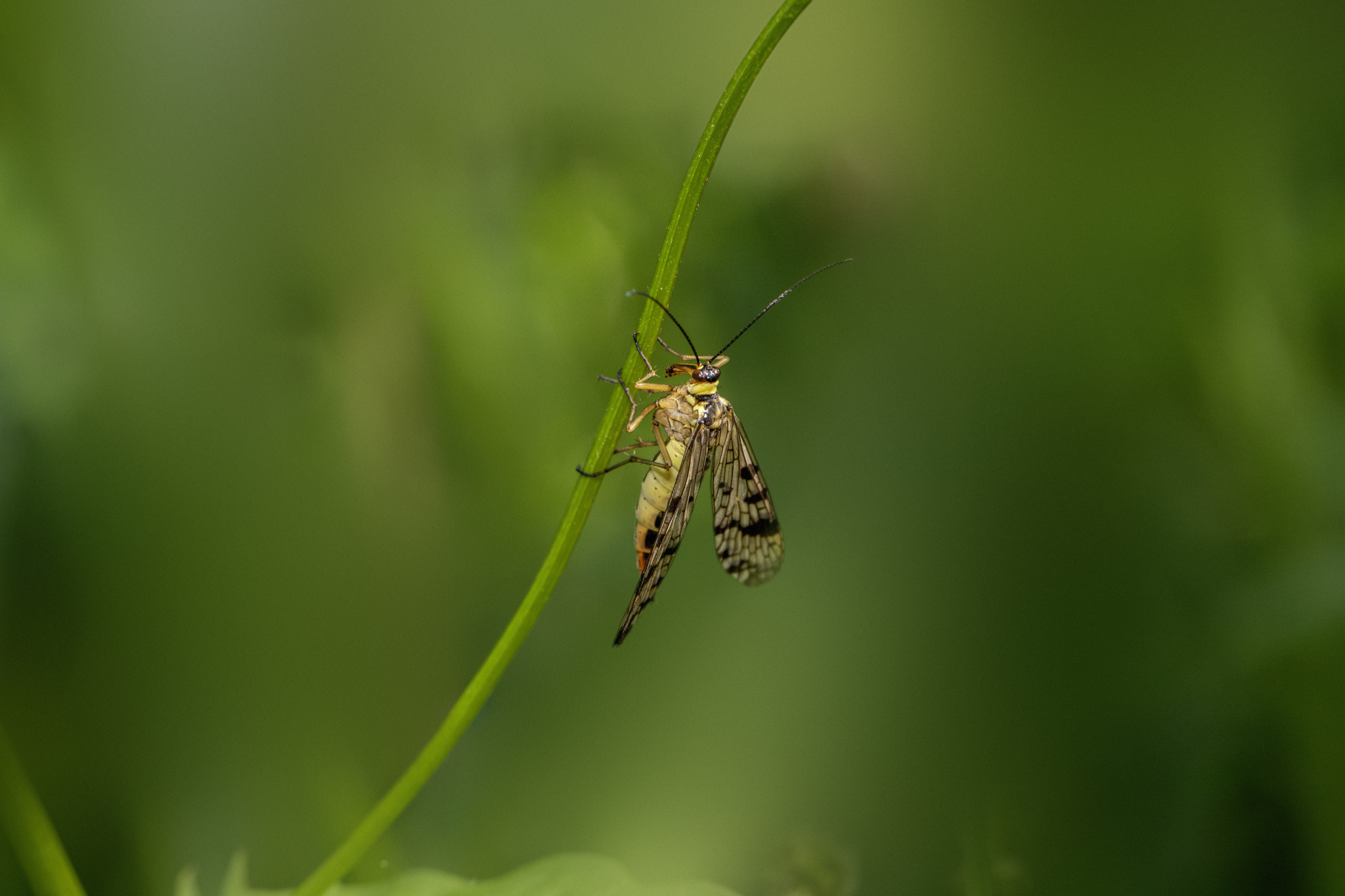The Scorpion Fly (Panorpa communis) is a fascinating insect belonging to the family Panorpidae. Known for its distinctive appearance, this insect is named after the scorpion-like curve of the male’s abdomen, which ends in a harmless set of genital claspers. Despite its fearsome name, the Scorpion Fly is harmless to humans and plays an essential role in ecosystems.
Physical Description
- Size:
- Length: 18–28 mm (including wings).
- Coloration:
- Yellowish-orange body with black markings.
- Transparent wings with dark venation and spots, held flat over the body at rest.
- Head:
- Long, downward-pointing beak or rostrum, equipped with mouthparts for feeding.
- Male Abdomen:
- Curved upwards at the tip, resembling a scorpion’s stinger but is entirely non-venomous.
Behavior
- Diet:
- Feeds on decaying organic matter, dead insects, and sometimes ripe fruit.
- Known to steal prey from spider webs.
- Activity:
- Most active in warm weather, particularly in summer.
- Often seen resting on vegetation or flying slowly near ground level.
- Mating:
- Males offer nuptial gifts, such as saliva secretions or small prey, to females during courtship.
Habitat
- Found in humid, sheltered environments, including:
- Woodland edges and clearings.
- Hedgerows and grassy meadows.
- Areas near streams or water sources.
Life Cycle
- Eggs:
- Laid in damp soil or leaf litter.
- Larvae:
- Caterpillar-like in appearance, feeding on decaying organic material.
- Live in the soil and pupate in a silk cocoon.
- Adults:
- Emerge in late spring to early summer.
Distribution
- Widely distributed across Europe and parts of western Asia.
- Found in temperate climates and common in its preferred habitats.
Conservation Status
- Classified as Least Concern, with stable populations.
- Sensitive to habitat destruction and pesticide use.
Ecological Role
- Decomposer:
- Helps break down decaying organic material, contributing to nutrient cycling.
- Food Source:
- Serves as prey for birds, spiders, and other insectivores.
Interesting Facts
- Misleading Name:
- The “scorpion” name comes from the male’s abdominal shape, but it is entirely harmless.
- Courtship Gifts:
- Nuptial gifts are thought to improve mating success by providing females with extra nutrients.
- Unique Feeding Habits:
- Scorpion Flies are opportunistic feeders and play an important role in cleaning up dead insects.
Summary
The Scorpion Fly (Panorpa communis) is a unique and intriguing insect that combines a striking appearance with fascinating behaviors. Its ecological role as a decomposer and its harmless nature make it an important part of the ecosystem. Protecting its habitats ensures the survival of this beneficial and captivating species.
Visited 775 times, 2 visit(s) today
Views: 1475
Subscribe to the newsletter:
